What is a Clavicle Fracture?
Clavicle fracture, also called broken collarbone is a very common sports injury seen in people who are involved in contact sports such as football and martial arts as well as impact sports such as motor racing. A direct blow over the shoulder that may occur during a fall on an outstretched arm or a motor vehicle accident may cause the clavicle bone to break.
Symptoms of Clavicle Fractures
Broken clavicle may cause difficulty in lifting your arm because of pain, swelling and bruising over the bone.
Treatments for Clavicle Fractures
Broken clavicle bone, usually heals without surgery, but if the bone ends have shifted out of place (displaced) surgery will be recommended. Surgery is performed to align the bone ends and hold them stable during healing. This improves the shoulder strength. Surgery for the fixation of clavicle fractures may be considered in the following circumstances:
- Multiple fractures
- Compound (open) fractures
- Fracture associated with nerve or blood vessel damage and scapula fracture
- Overlapping of the broken ends of bone (shortened clavicle)
Plates and Screws Fixation
During this surgical procedure, your surgeon will reposition the broken bone ends into normal position and then uses special screws or metal plates to hold the bone fragments in place. These plates and screws are usually left in the bone. If they cause any irritation, they can be removed after fracture healing is complete.
Complications of Clavicle Fracture Surgery
Patients with diabetes, the elderly individuals and people who make use of tobacco products are at a greater risk of developing complications both during and after the surgery. In addition to the risks that occur with any major surgery, certain specific risks of clavicle fracture surgery include difficulty in bone healing, lung injury and irritation caused by hardware.

